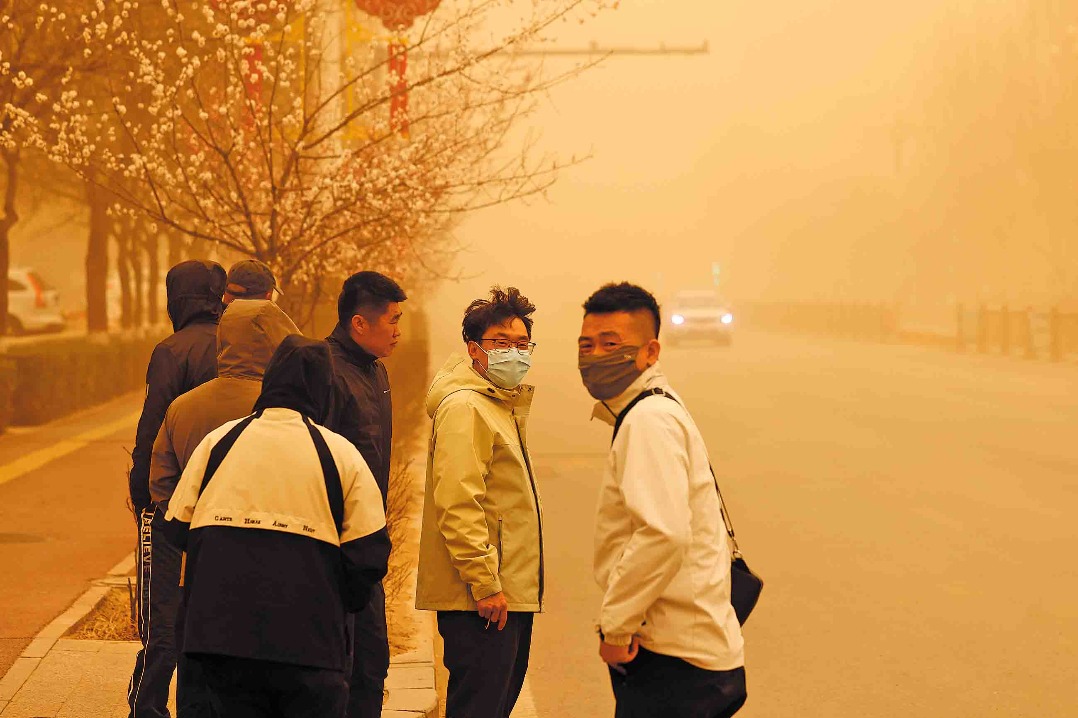Dedicated efforts bolster nation's health defenses
Measures taken during pandemic safeguard public, prepare for future outbreaks


After the height of the COVID-19 pandemic passed more than a year ago, China took steady and solid steps to improve its public health system in preparation for future outbreaks and to safeguard the health of its people.
The legal framework regarding the response to public health emergencies has been reinforced, while lessons learned during the three-year battle against COVID-19 have been used to draw up new guidelines.
Over the past year, upgraded disease control measures, including regular pathogen surveillance and quickly increased capacity to handle an acute health event, have also been introduced. These measures have tackled sporadic outbreaks of COVID-19, cases of monkeypox that spread to more than 20 provinces, and a number of respiratory pathogens that caused an increase in hospital admissions this winter.
The mission of "building a powerful public health system" was proposed by the central leadership in June 2020, several months after the pandemic emerged. Efforts to achieve this goal have been accelerated in the past year and will continue in the years ahead.
Late last month, the State Council's General Office released a guideline aimed at promoting high-quality development of China's disease control system. Enhancing the role of science and technology in combating viruses, and nurturing more public health professionals, were among the key tasks.
Wang Hesheng, director of the National Disease Control and Prevention Administration, said during a recent news conference, "The new document puts forward a blueprint and vision for China's disease control sector and will play an essential role in establishing a powerful public health system and contribute to the grand goal of building a healthy China for all."
Restrictions eased
On Jan 8 last year, China downgraded its management of COVID-19 from the top-tier category A to category B, meaning that infected patients would no longer be quarantined or their close contacts traced. Inbound passengers would not face mandatory isolation.
In early May, the World Health Organization ended the designation of COVID-19 as a global health emergency, as the number of cases was falling and life in much of the world had returned to normal.
However, the relief brought by the eased restrictions was also intertwined with increased alertness and an urgent need to reflect on the pandemic.
WHO director-general Tedros Adhanom Ghebreyesus said: "COVID-19 has left — and continues to leave — deep scars on our world. Those scars must serve as a permanent reminder of the potential for new viruses to emerge, with devastating consequences.
"We owe it to those we have lost… to learn those lessons and to transform that suffering into meaningful and lasting change."
Liang Wannian, head of an expert panel on epidemic control at the National Health Commission, said the WHO's decision does not mean that the virus can be left to run rampant.
Continuous monitoring of variants, expanding vaccination among vulnerable groups, and improvements to the public health system and grassroots medical facilities remain essential ways to cope with the disease, he said.
While China swiftly noted the significance of committing to a stronger public health system during the pandemic, a series of concrete steps were taken in the legal field, along with institutional reforms.
In May 2021, the National Disease Control and Prevention Administration, a new central-level body, was inaugurated.
Shen Hongbing, deputy director of the new administration and director of the Chinese Center for Disease Control and Prevention, said during an event in April that the year 2023 would be an important one for disease control system reforms that would spread from central to regional level.
"Provincial-level disease control administrations should also be set up in reference to the central model. At municipal and county level, disease control bureaus should be established within the local health commissions, and local disease control centers should be set up," he said.
By the end of June, nearly all provincial-level regions in China had announced the establishment of their own disease-control facilities.
For example, the disease control administration in Yunnan province was unveiled in late May. Local authorities said the new institute would strengthen leadership and coordination across different tiers of disease control bodies throughout the province. They also noted that the administration would improve communication with many ports in Yunnan, which shares long borders with Myanmar, Laos and Vietnam.
The legal foundation for disease control work has also been strengthened in the past year.
In late October, a draft revision of the Infectious Disease Prevention and Control Law was submitted to the nation's top legislature for review. The focus was on improving China's epidemic surveillance and early warning and reporting system, including prohibiting interventions and providing incentives for early reporting.
Li Wei, a senior legislator, said the draft added an entire section on monitoring and early precautions against contagious diseases, and also clarified legal responsibilities.
"Effective approaches and experiences such as scientific-based disease control and a whole-of-society approach toward coping with the epidemic have also been incorporated into the law, which is of great significance toward building a sound legal system on public health," he said.
Last month, Chinese lawmakers reviewed draft revisions to the Frontier Health and Quarantine Law aimed at bolstering emergency response measures against major outbreaks at ports across the country.
Shen, head of the China CDC, said, "The legal landscape surrounding disease control work in China, with the law on infectious disease and control, the law on vaccine management, as well as the regulation on emergency response to acute public health events that are in the pipeline, has become more sophisticated in recent years."
























